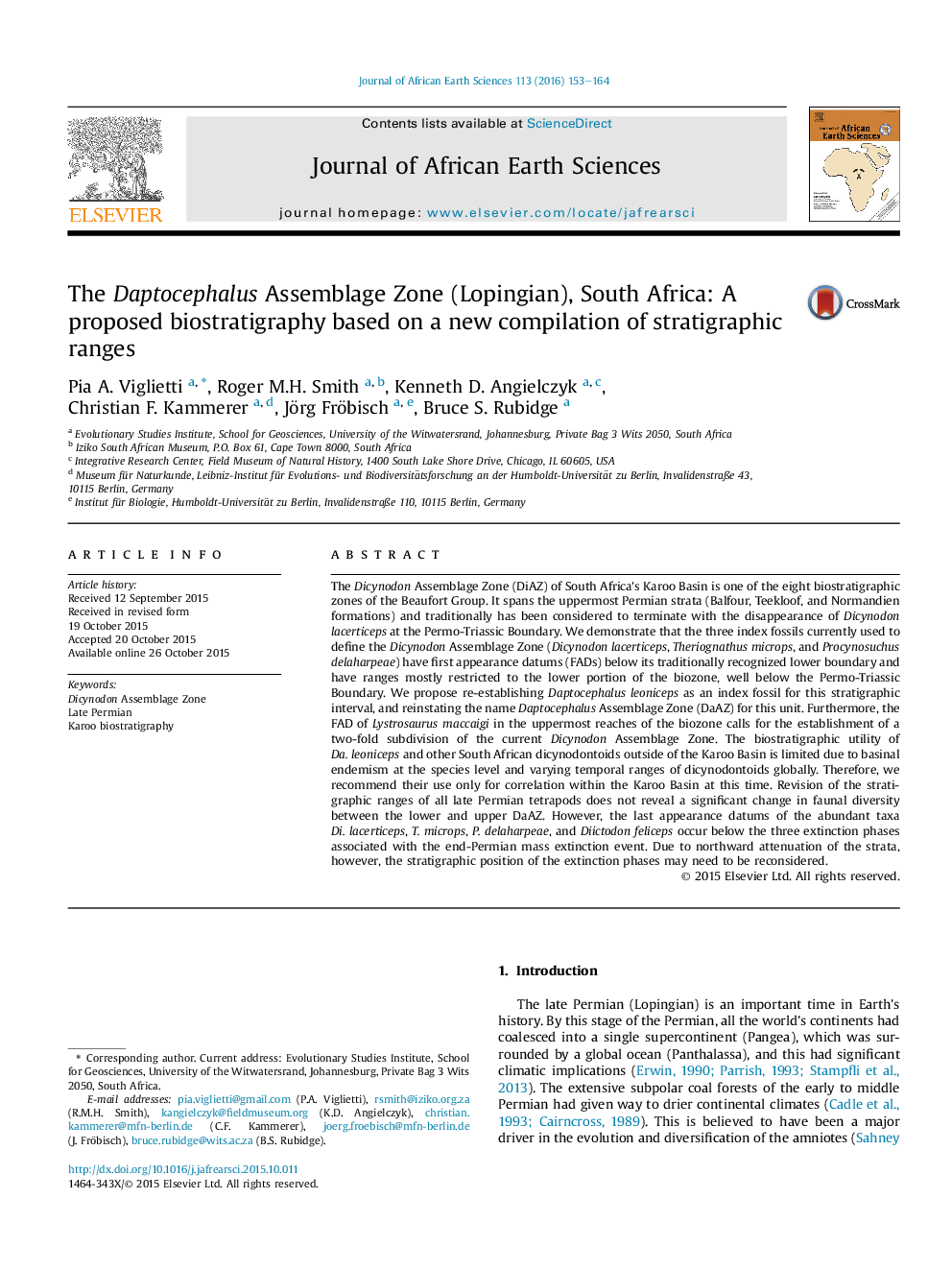| Article ID | Journal | Published Year | Pages | File Type |
|---|---|---|---|---|
| 4728278 | Journal of African Earth Sciences | 2016 | 12 Pages |
•First detailed stratigraphic ranges of Late Permian tetrapods from the Karoo Basin.•Reinstatement of the Daptocephalus Assemblage Zone required based on modifications.•New stratigraphic ranges call for subdivision of the Daptocephalus Assemblage Zone.•Refined biostratigraphy will assist in global Late Permian correlation.
The Dicynodon Assemblage Zone (DiAZ) of South Africa's Karoo Basin is one of the eight biostratigraphic zones of the Beaufort Group. It spans the uppermost Permian strata (Balfour, Teekloof, and Normandien formations) and traditionally has been considered to terminate with the disappearance of Dicynodon lacerticeps at the Permo-Triassic Boundary. We demonstrate that the three index fossils currently used to define the Dicynodon Assemblage Zone (Dicynodon lacerticeps, Theriognathus microps, and Procynosuchus delaharpeae) have first appearance datums (FADs) below its traditionally recognized lower boundary and have ranges mostly restricted to the lower portion of the biozone, well below the Permo-Triassic Boundary. We propose re-establishing Daptocephalus leoniceps as an index fossil for this stratigraphic interval, and reinstating the name Daptocephalus Assemblage Zone (DaAZ) for this unit. Furthermore, the FAD of Lystrosaurus maccaigi in the uppermost reaches of the biozone calls for the establishment of a two-fold subdivision of the current Dicynodon Assemblage Zone. The biostratigraphic utility of Da. leoniceps and other South African dicynodontoids outside of the Karoo Basin is limited due to basinal endemism at the species level and varying temporal ranges of dicynodontoids globally. Therefore, we recommend their use only for correlation within the Karoo Basin at this time. Revision of the stratigraphic ranges of all late Permian tetrapods does not reveal a significant change in faunal diversity between the lower and upper DaAZ. However, the last appearance datums of the abundant taxa Di. lacerticeps, T. microps, P. delaharpeae, and Diictodon feliceps occur below the three extinction phases associated with the end-Permian mass extinction event. Due to northward attenuation of the strata, however, the stratigraphic position of the extinction phases may need to be reconsidered.
Graphical abstractFigure optionsDownload full-size imageDownload as PowerPoint slide
